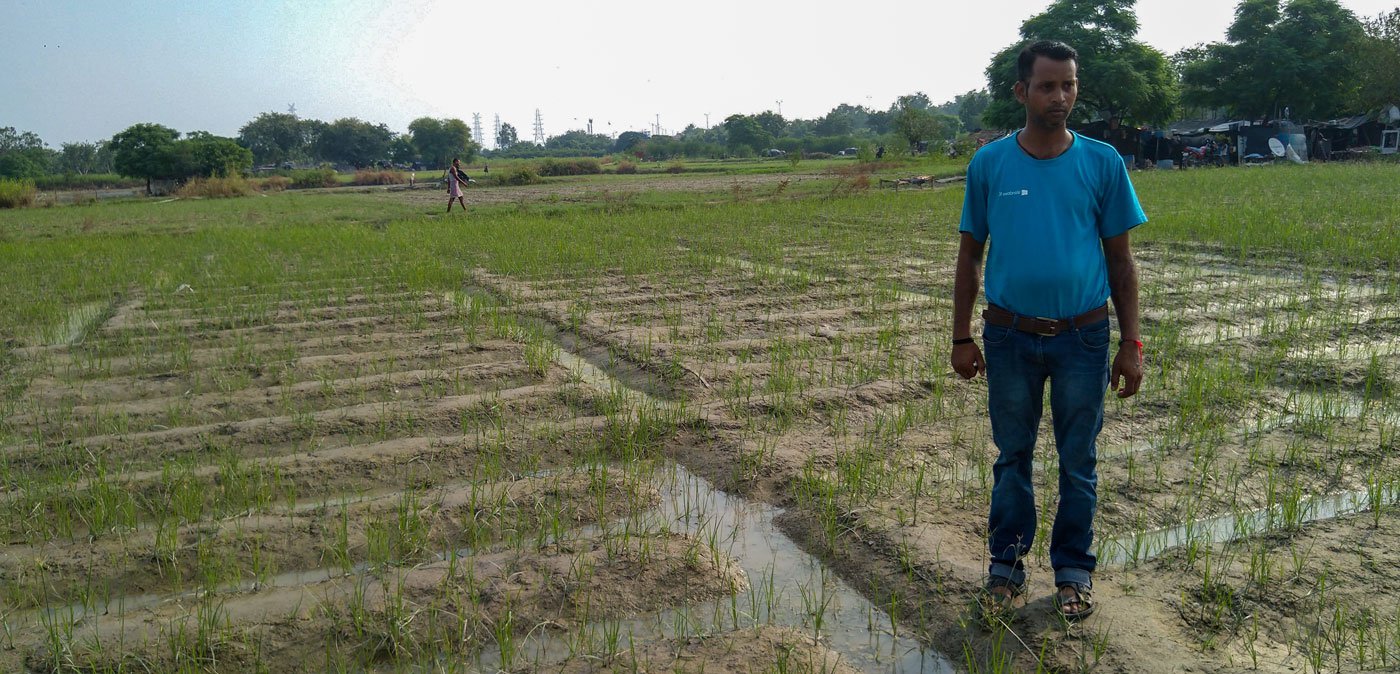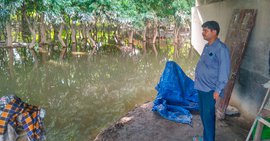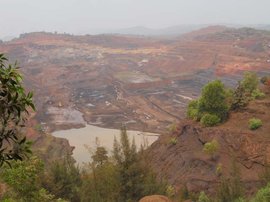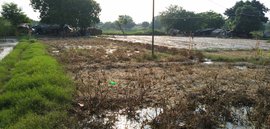“Our relationship is with the Yamuna. We have always been next to a river.”
That’s Vijender Singh talking about his family’s bond with the river. A community of mallahs (boatmen), they have lived next to and ploughed the floodplains adjoining the Yamuna in Delhi for generations. The 1,376 kilometre long river flows for 22 kms through the National Capital Territory and its floodplains here measure 97 square kilometres.
Over 5,000 farmers like Vijender had pattas (land deeds) giving them ownership for 99 years.
That was before the bulldozers came.
In the biting winter of January 2020, municipal authorities bulldozed their fields with standing crops to make way for a proposed biodiversity park. Vijender had to quickly move his family to a rented accommodation in nearby Geeta Colony.
Overnight the 38-year-old farmer lost his livelihood and had to start driving in the city to feed his family of five – his wife, and three sons all below the age of 10. He was not the only one. Others who were displaced from their land and livelihoods scrambled to find jobs as painters, gardeners, security guards and sweepers at metro stations.
"If you look at the road from Loha Pul to ITO, the number of kachori sellers on bicycles has gone up. These are all farmers. Once the land is gone, what can a farmer do?" he asks.
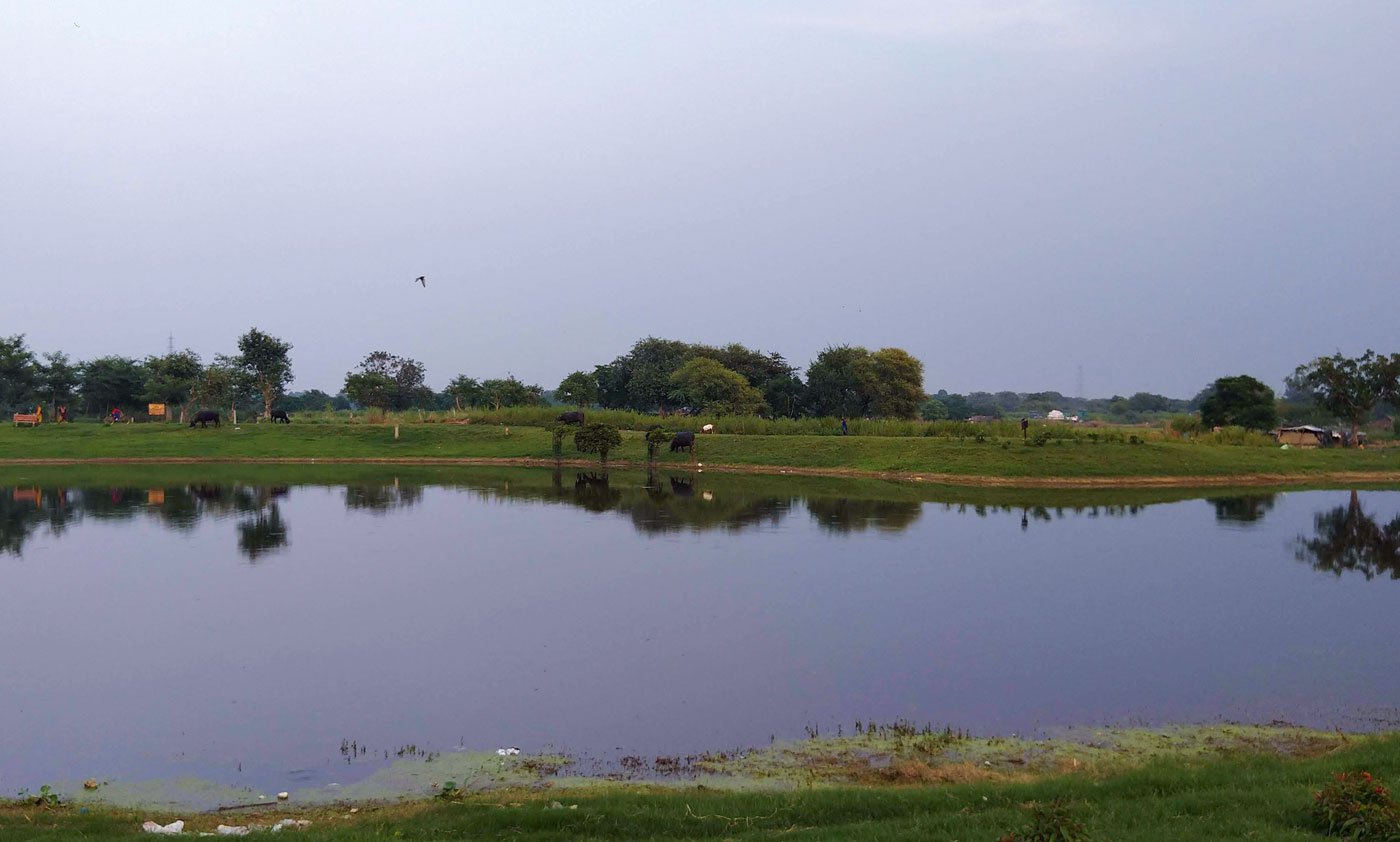

Left: Bela Estate in Delhi was part of the Yamuna floodplains where farmers cultivated a variety of crops. It was one of the first fields to be razed in 2020 to make way for a biodiversity park. Right: Delhi Development Authority’s bulldozers razing crops in Delhi’s Bela Estate in November 2020, with police protection
A few months later the country would go into lockdown – March 24, 2020 – throwing the family into further distress: Vijendra’s middle son, then aged six, has cerebral palsy and procuring his monthly medications became difficult. There was no direction from the state on the rehabilitation of the roughly 500 families like his who had been displaced from the banks of the Yamuna – their source of income and homes razed to the ground.
“Before the pandemic, we managed to earn Rs 8,000-10,000 a month selling cauliflowers, green chillies, mustard, flowers and so on,” said Kamal Singh who has a family of five: wife, two sons aged 16, 12 and a 15-year-old daughter. The 45-year-old farmer recalls the irony of how a farmer like him had to survive on the food handed out by volunteer groups.
During the pandemic, the only income they had was from sale of milk of the lone buffalo the family owned. The Rs. 6,000 earned in a month could barely cover their expenses. “My children’s education was impacted,” said Kamal. “The vegetables we grew would have helped us eat. These crops were to be harvested but they [officials] bulldozed them saying it’s the NGT [National Green Tribunal] order,” he added.
A few months before that happened – in September 2019 – the NGT had directed the Delhi Development Authority (DDA) to fence in the Yamuna floodplains so that it could be converted into a biodiversity park. There were plans to construct a museum too.
“Thousands of people around the khadar – the most fertile land – were dependent on the river for livelihood, what about them?” asks Baljeet Singh. (Read: They say there are no farmers in Delhi .) The 86-year-old is general secretary of the Delhi Peasants Cooperative Multipurpose Society. He had leased out 40 acres to farmers and said, “The government wants to make the Yamuna an income stream by building biodiversity parks.”
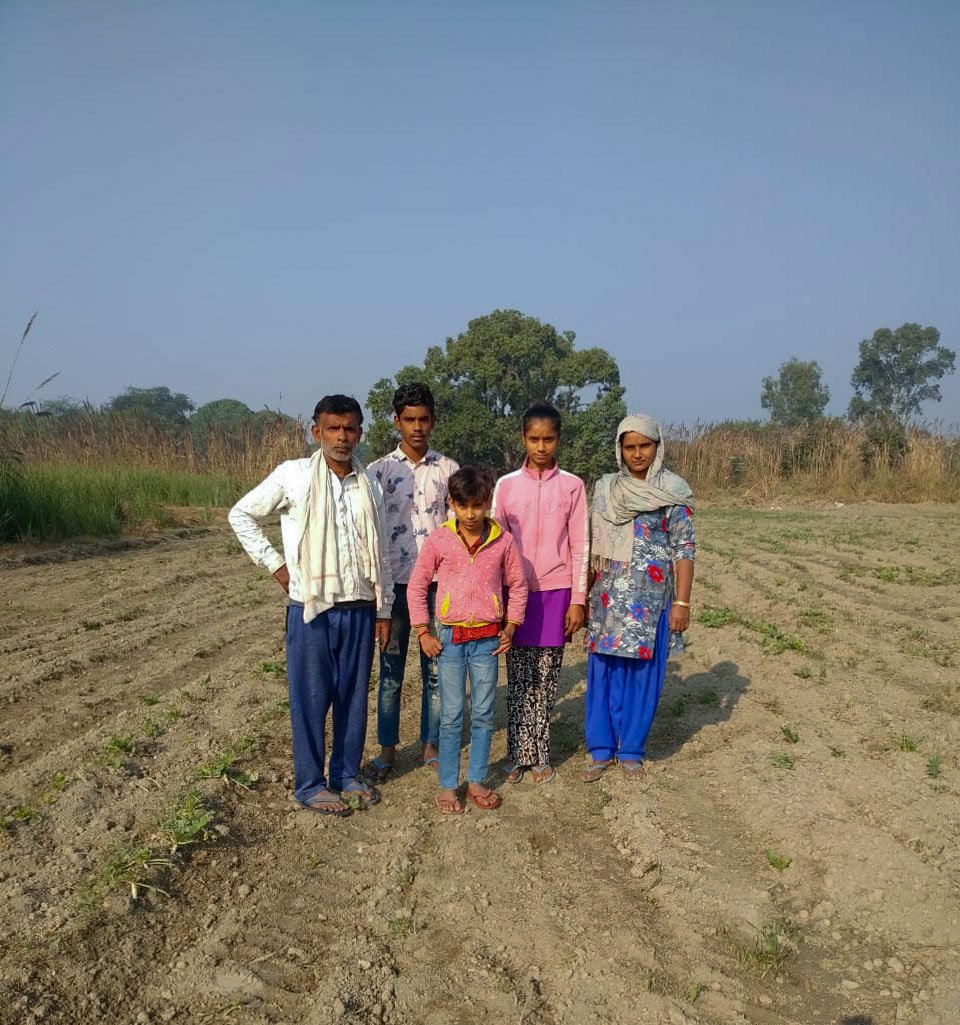
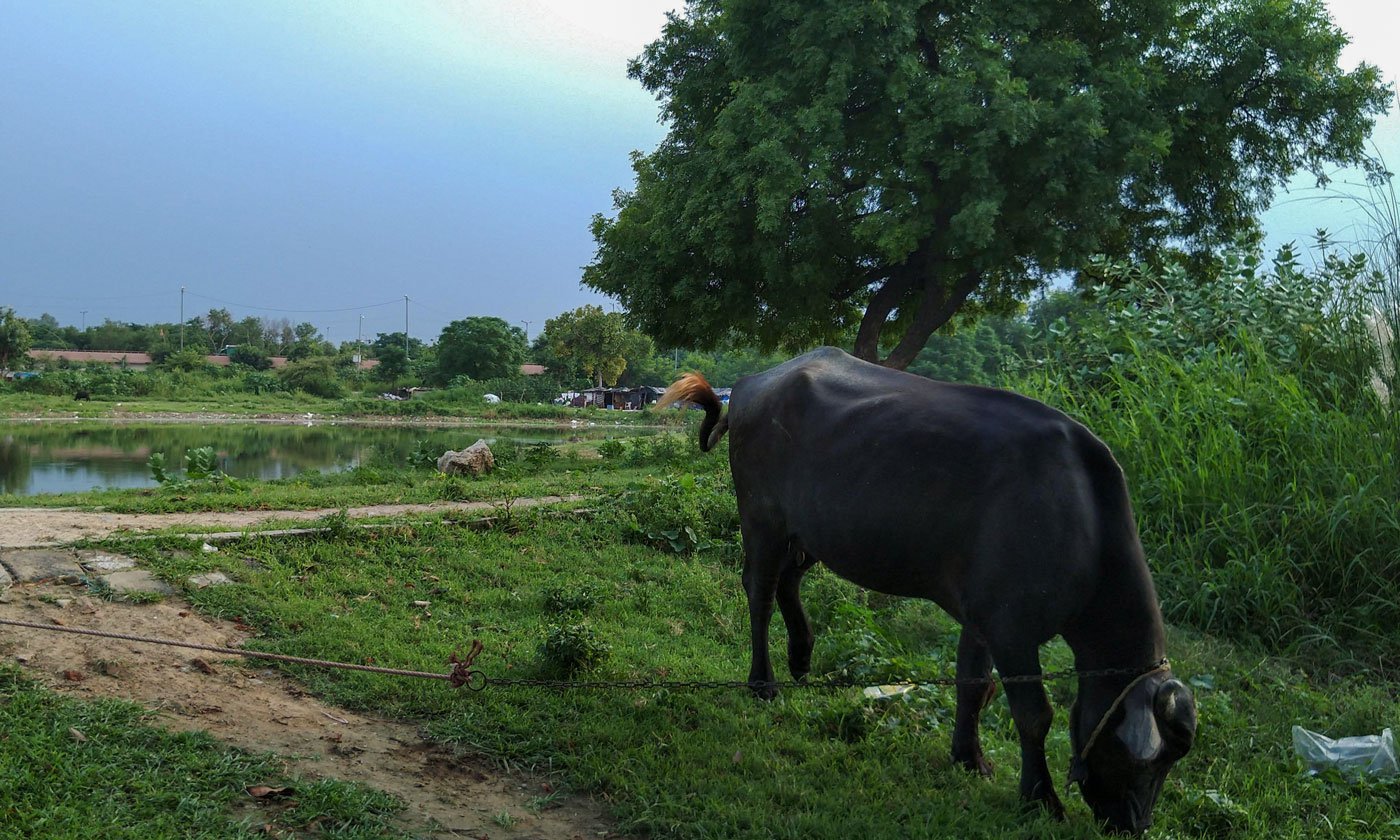
Left: Farmer Kamal Singh, 45, with his wife and three children. The crops they had grown for consumption in the pandemic winter of 2020 were destroyed by the DDA's bulldozers. Right: Delhi's farmers have been cultivating the Yamuna floodplains for generations, and they had leases on the land
For a while now DDA had been telling farmers and cultivators to vacate. In fact, more than a decade ago municipal authorities had brought in bulldozers to flatten their homes so that ‘restoration’ and ‘rejuvenation’ work could be carried out.
The vegetable fields of Yamuna farmers are only the latest casualties in the effort to make Delhi a ‘world class’ city where the riverfront is real estate up for grabs. “The tragedy is that the city’s developer has looked at the floodplains as an area waiting to be developed,” said retired Indian Forest Service officer, Manoj Misra.
*****
A world ‘crass’ city has no place for farmers. It never had.
In the 70s, building work for the Asian Games saw large portions of the floodplain taken over for building hostels and stadia. This ignored the city’s masterplan that earmarked the area as an ecological zone. Subsequently, in the late 90s, IT Parks, metro depots, express highways, the Akshardham temple and housing for the Commonwealth Games Village came up on the floodplains and riverbed. “Even though the 2015 NGT judgement said the floodplains can’t be constructed,” adds Misra.
Each construction has meant the end of the road for Yamuna's farmers, ousted with large-scale brutal evictions. “Because we are poor, we were driven out,” points out Shiv Shankar, Vijender’s 75-year-old father who cultivated crops on the floodplains of the Yamuna in Delhi all his life, or at least till the NGT orders came about in recent years. “In India’s capital, this is how farmers are treated, to make way for museums and parks for a handful of visitors,” he said.
At the same time, the labourers who had worked to build these shiny monuments to India’s ‘development’ and lived in shanties nearby, were evicted from the riverbanks. Their makeshift homes having no place in edifices of ‘national prestige’ like swank sporting facilities.
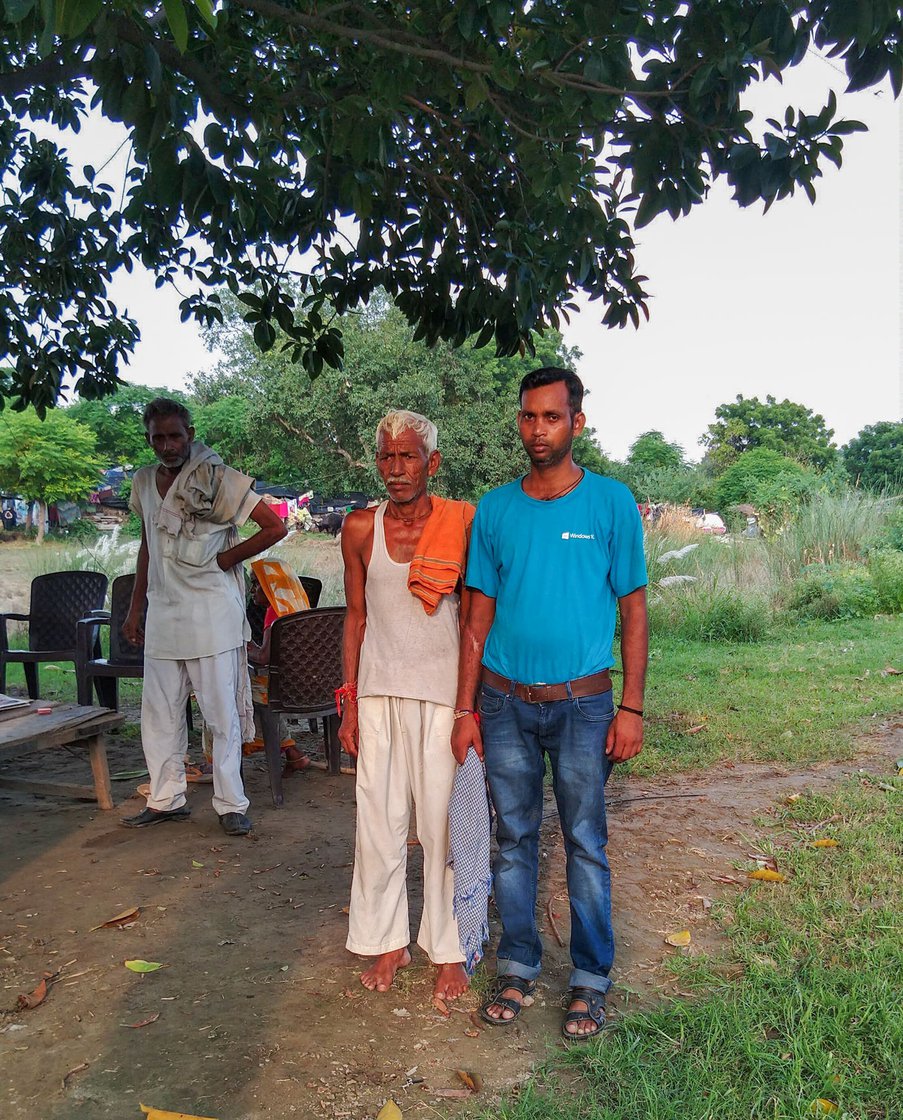
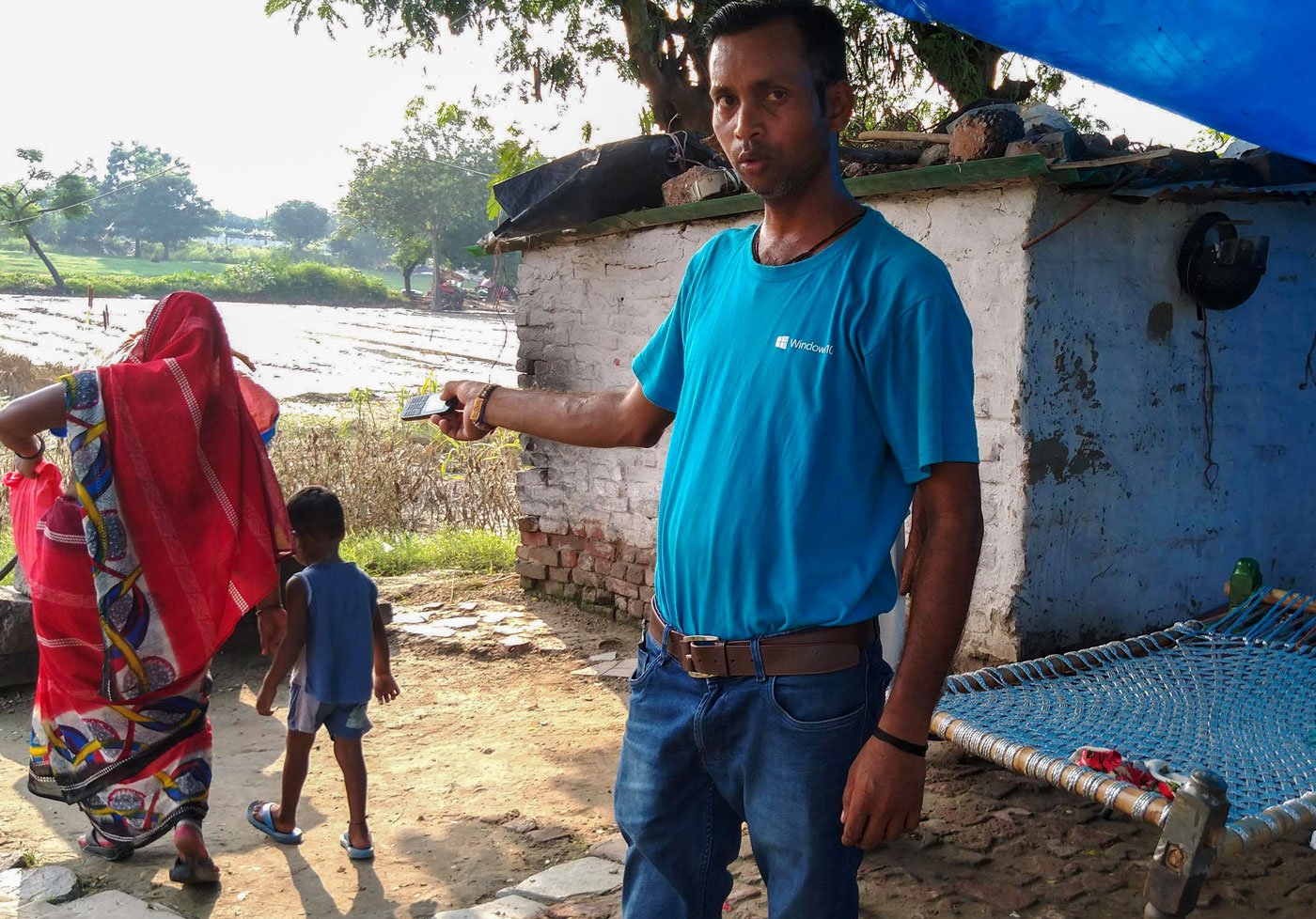
Left: Shiv Shankar and Virender Singh (foreground). Right: Virender pointing towards the fields his family had cultivated before bulldozers mowed them down
“The NGT ordered [in 2015] that once the area was identified as Yamuna floodplains, it must be protected because it belongs to the river and not to you or me,” says B.S Sajwan who headed the Yamuna Monitoring Committee set up by the NGT. He said the tribunal is just following its mandate.
“What about us who derived a livelihood from here?” asks Ramakant Trivedi who has lived and farmed all his 75 years on these banks.
Agriculturists cultivate 24,000 acres and harvest a variety of crops that are sold mainly in Delhi’s markets. Many like Shiv Shankar are therefore perplexed by another NGT claim that the food crops they were growing was “using the polluted water of the river which would be hazardous if it entered the food chain”. “Why let us stay on for decades and keep growing food for the city then?” he asks.
PARI first met Shiv Shankar, Vijender and other families in the area in 2019 when we visited to report on how climate change had impacted their livelihoods. Read: Big city, small farmers, and a dying river .
*****
In the next five years – 2028, Delhi is expected to become the world’s most populous city, according to a United Nations study . And its population is expected to reach between 28 to 31 million people by 2041.
A growing population puts pressure not just on the banks and floodplains but the waterbody too. “Yamuna is a monsoonal river that gets 10-15 rainy days a month for just three months in a year,” said Misra. He was responding to the fact that the nation’s capital is dependent on the Yamuna for drinking water, whose one source is the groundwater that’s replenished by the river.
The DDA has proposed complete urbanisation of the city, as mentioned in the Economic Survey of Delhi 2021-2022 .
This report also states, “agricultural activity is continuously declining in Delhi…”
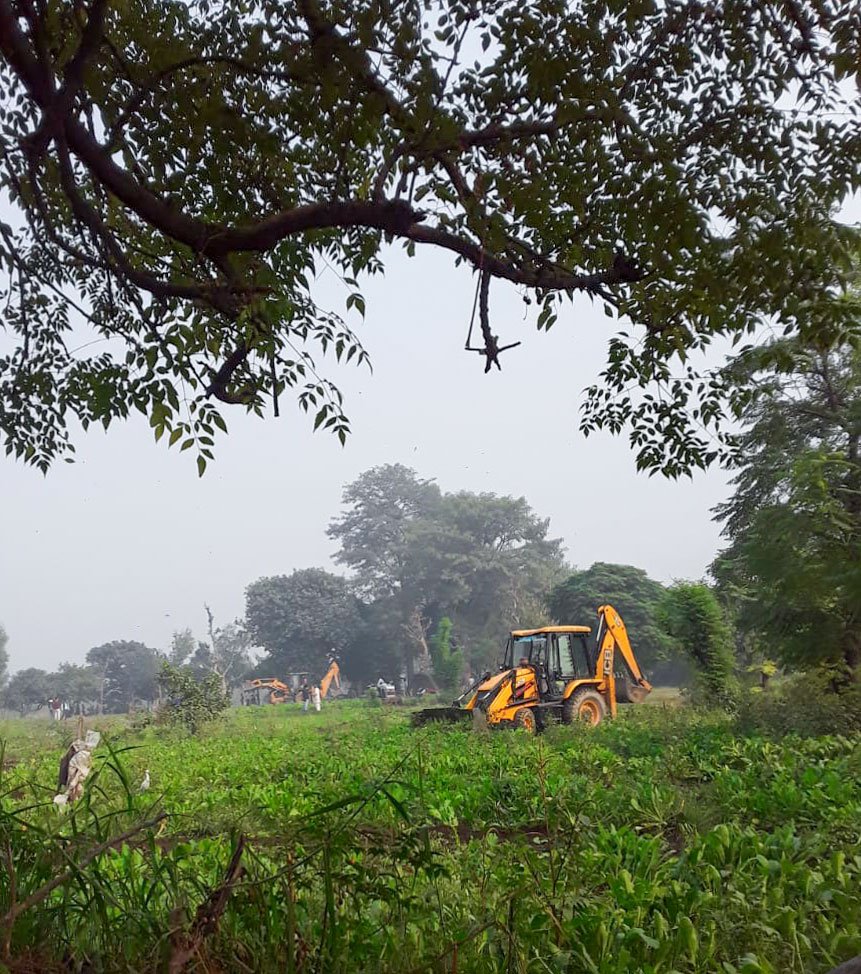
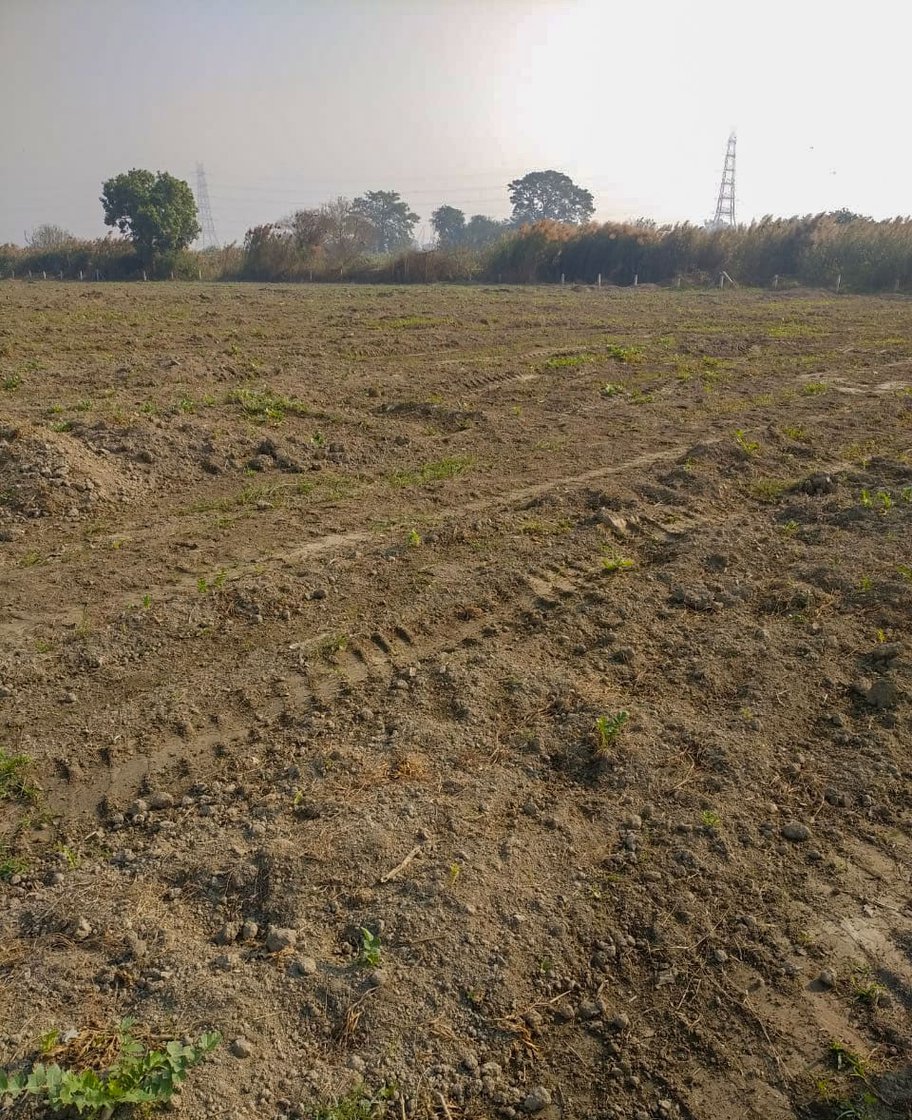
Left: The Delhi Development Authority’s bulldozers razing standing crops in Delhi’s Bela Estate in November 2020. Right: The fields after the DDA bulldozers finished their job
There were 5,000-10,000 people deriving their livelihood from the Yamuna in Delhi till 2021, said Manu Bhatnagar. He is the principal director of the natural heritage division of the Indian National Trust for Art and Cultural Heritage (INTACH). He suggested that the same people could be employed in the beautification of the floodplains. “As pollution comes down, fisheries improve, water sports can be an option, and 97 square kilometres of the floodplains can be used for growing food products like melons,” he said when PARI went to meet him in 2019 and he gave us a book titled, Narratives of the Environment of Delhi , published by INTACH.
*****
As the pandemic raged through the capital city, the 200-odd families who had been displaced had to forage for basic rations. The monthly earning of a family which was about Rs 4,000-6000 till early 2021 dropped to nothing in the lockdown. “From two meals a day we were down to one. Even our two cups of tea were reduced to one a day,” said Trivedi. “We were even ready to work in the DDA’s proposed park so at least our children got food. Government should’ve taken care of us; don’t we have equal rights? Take our land but give us a means to survive?”
In May 2020 the farmers lost the case in the Supreme Court and their leases were no longer valid. They could not afford the Rs. 1 lakh they needed for an appeal and their displacement became permanent.
“The lockdown made it worse when daily wage and car loading work also went away. There was no money to buy basic medicines either,” said Vijender. His 75-year-old father, Shiv Shankar had to look for odd jobs in the city.
“We should all have stopped farming earlier and found other work. When there are no crops, people will understand that food is essential and farmers are important,” he added angrily.
*****
Shiv Shankar looks back on time when he and his family of farmers lived a mere two km from the historic Red Fort. It is from these ramparts that the Prime Minister addresses the nation every year on Independence day. He said they had never needed a TV or radio to hear the speeches.
“The wind direction is such that it carries the [PM’s] words to us…The sad part is our words never reached them.”
